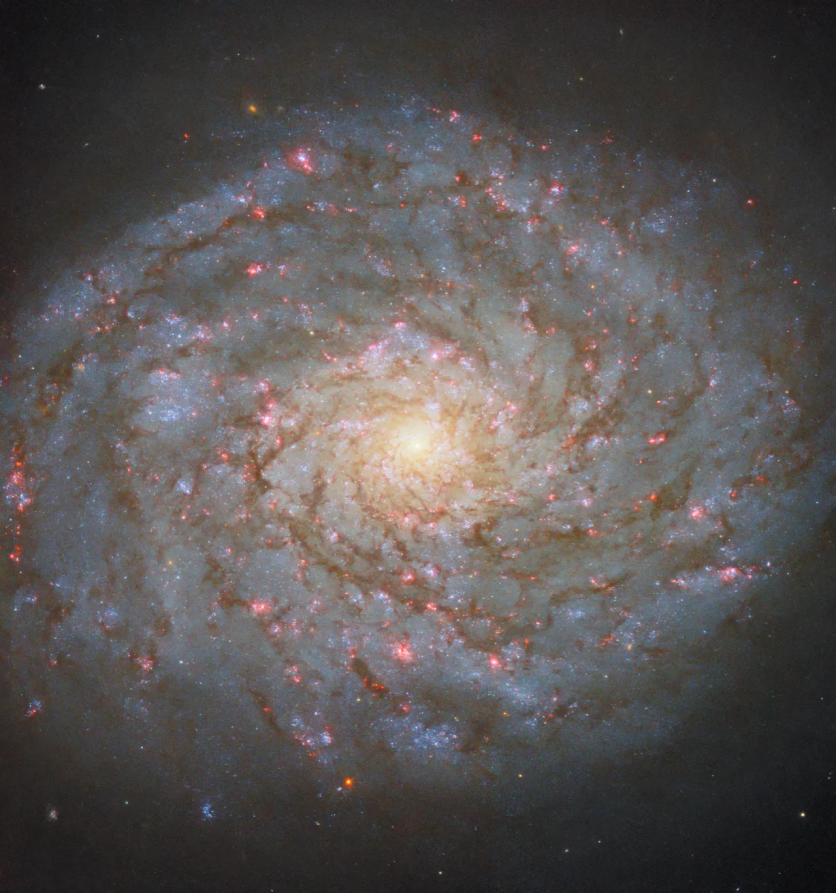A jewel-like galaxy radiates royally in a new image from the Hubble Space Telescope. The NGC 4689 galaxy resides a mere 54 million light-years from our planet and holds a deep mythological lore from the ancient past.
This spiral galaxy is located in the constellation Coma Berenices, which in Latin translates to "Berenice's Hair." This name alludes to Queen Berenice II of Egypt. Thus, NGC 4689 is positioned within the imagined flowing locks of the ancient queen.

The Mythological Allure of Bernice's Hair
In historical context, the name had a literal interpretation. The tale suggests that during Berenice's era, people believed her court astronomer had declared a missing lock of her hair that had been placed among the stars by the gods.
This mythological act is encapsulated in the name of the constellation Coma Berenices, capturing the essence of the queen's legend. This image, released by the European Space Agency (ESA) on May 24, further highlights the lore behind Berenice. NGC 4689 holds an intriguing position in contemporary astronomy.
Given the universe's immensity, its distance of 54 million light-years qualifies it as relatively nearby, according to ESA. The image combines data from two observation sets, one from 2019 and another from 2024.
These observations underscore the collaborative efforts of Hubble and the James Webb Space Telescope. While Webb's infrared data offers unprecedented detail, Hubble's ultraviolet and visible light observations provide essential insights into the stellar populations of galaxies like NGC 4689.
Read Also : NASA Hubble Space Telescope Resumes Scientific Mission, But TESS' Exoplanet-Hunting in Limbo
NGC 4689 Galaxy Is Like a Smudged Fingerprint in the Sky
It is worth noting that Hubble already featured this galaxy in an equally stunning image in 2020. NASA said that the iconic telescope is well-acquainted with spiral galaxies and offers some of the most striking images of our spiral neighbors.
NGC 4689, although viewed almost face-on, appears less like a grand spiral and more like a smudged fingerprint in the sky. Despite the high image quality, the contrast between the spiraling arms and the less dense regions is minimal.
That is because NGC 4689 is considered an anemic galaxy, containing only small amounts of the raw materials necessary for star formation. Consequently, star production is subdued, producing less luminous arms than other spiral galaxies.
Nevertheless, NGC 4689 possesses a distinct charm. Its delicate glow stands out subtly against the backdrop of space, offering a quietly captivating spectacle.
Though not as attention-grabbing as flamboyant spiral galaxies, this gentle brilliance adds to its unique allure. The faint, glowing material of NGC 4689 weaves an ethereal tapestry with an intriguing mythological lore behind it.
Related Article : NASA's Hubble Space Telescope Captures 'Butterfly Nebula' In Stunning Motion | Fun Facts About This Beautiful Space Butterfly

ⓒ 2025 TECHTIMES.com All rights reserved. Do not reproduce without permission.




